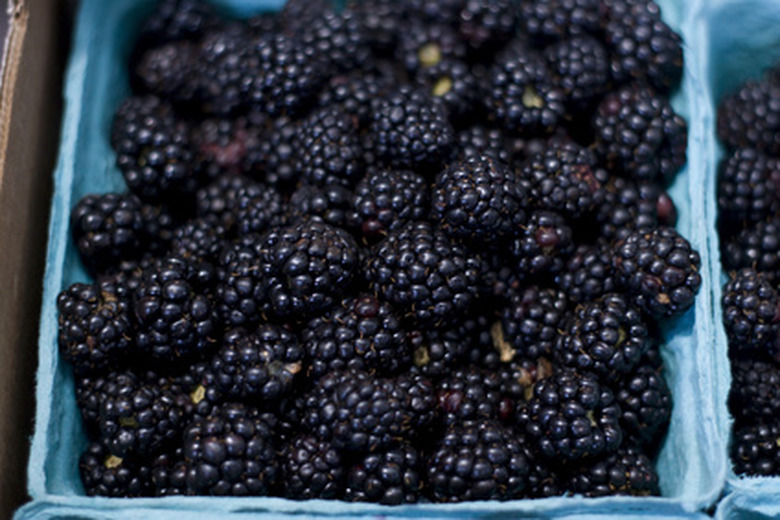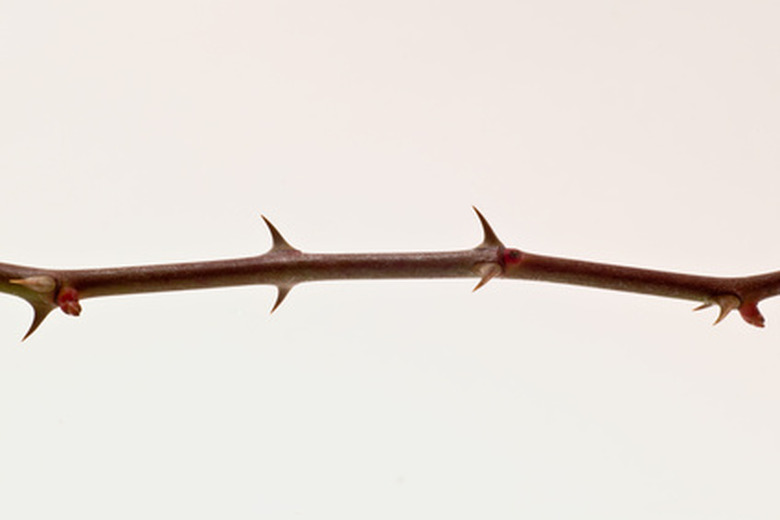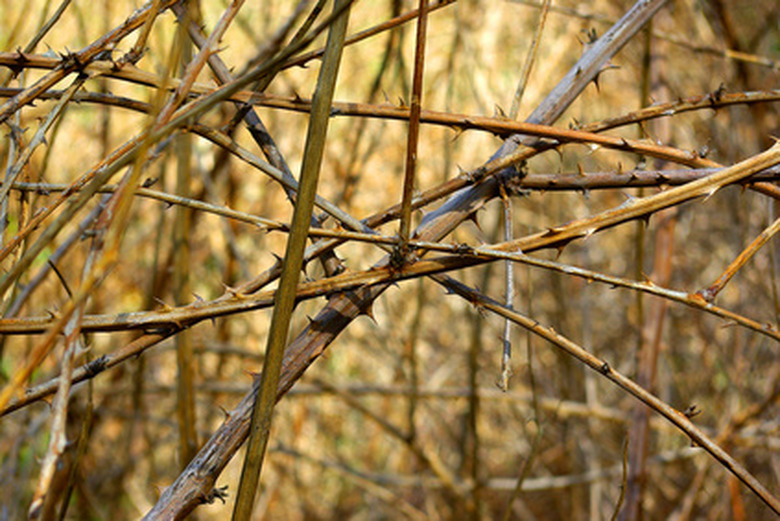The History Of The Blackberry Fruit
Blackberries are used in recipes, but the berries and other parts of the plant have been used in other places besides the kitchen. Throughout history, the blackberry has had significance in medicine and has been used in many ways. Almost every corner of the earth has a blackberry species that has adapted to its specific climate and conditions.
Origin
It is hard to trace the exact origin since blackberries proliferate all over the globe, but it is likely the first were in Asia, North or South America or in Europe. Greeks and Romans used blackberries in medicine, and Native Americans used them for food, medicine and to dye animal skins. Blackberries are also known as bramble, brummel, brambleberry and bly.
General History
The formal name of the blackberry is Rubus fructicosus, and there are more than 40 species. Blackberries were always considered wild, so in the early days they were not cultivated. Those who wanted the berries would travel to where a bush was growing and gather them. Development of the blackberry is relatively modern and was done mostly in America. Judge Logan began to breed blackberries in California and introduced loganberries, a relative of blackberries, in 1880. Identifying species is difficult because so many types of blackberry plants have crossbred by themselves. Luther Burbank attempted to develop a thornless berry in 1921, but the flavor lacked. Recently the Triple Crown berry was introduced and is a good-tasting, thornless berry.
- Blackberries are used in recipes, but the berries and other parts of the plant have been used in other places besides the kitchen.
Medicinal History
Blackberry has been used to treat bowel problems and fever for more than 2,000 years. The berry was not often used in medicinal applications but the root, bark and leaf was. They were boiled in water and given as medicine for whooping cough. Other illnesses thought to be cured by blackberry were bites from venomous creatures, boils and sore throats. In 1771, it was documented that blackberry decoctions would cure ulcers.
Culinary History
Blackberries taste good and have been used to make all kinds of sweets or eaten plain for centuries. In 1696, the London Pharmacopoeia documented information about blackberries being used to make wine and cordials. Blackberry pie, or crumble, and jam are a sweet favorite that goes back to the pioneer days.
- Blackberry has been used to treat bowel problems and fever for more than 2,000 years.
- In 1771, it was documented that blackberry decoctions would cure ulcers.
Folklore
Blackberries were thought to protect against spells and curses if gathered during a certain phase of the moon. Children with hernias were known to pass through an arched area in the bramble to cure them. Boils were supposed to be cured when the sufferer crawled through the brambles. It is more likely the thorns simply lanced the boils.
Other Uses
Native Americans used blackberry canes and vines to make twine. Blackberry bushes were often planted around European villages to offer protection against enemies and large animals that would do harm. The brambles provide protection to wildlife, including deer and birds. The berries have been known to be used to make an indigo or purple dye.
- Blackberries were thought to protect against spells and curses if gathered during a certain phase of the moon.
- The berries have been known to be used to make an indigo or purple dye.



